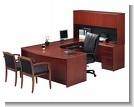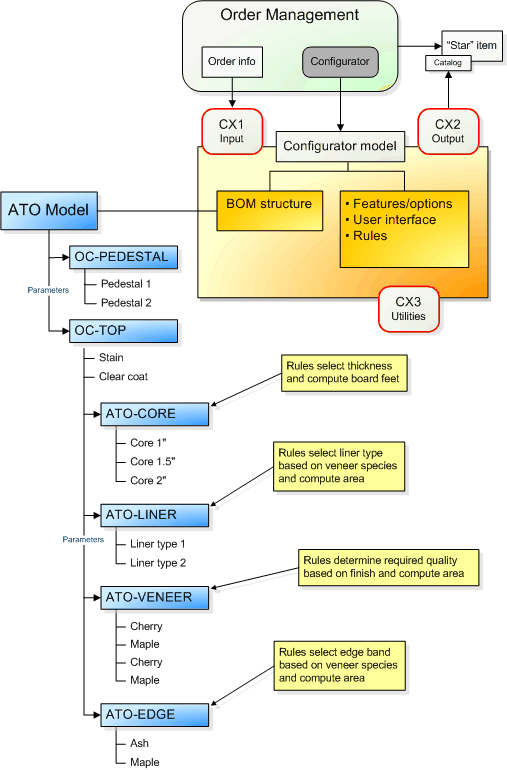Office furniture
Helping you configure to order
Engineering-based Configurator Model Design, Architecture and Programming
Client Starting Conditions Objectives Results Success Factors
Client
Column: 1
This client manufactures a wide variety of workstations, conference tables, reception stations, and seating.
The client uses several different wood species and offers many different finishes. They manufacture “standard” products in custom sizes.
Column: 2

Starting conditions
Manufacturing is vertically integrated but there are separate physical facilities for manufacturing sub-components as well as for final assembly and finishing.
Vertical integration allows for a very high level of quality control but loading and sequencing custom work orders across many facilities is challenging.
Configurator project objectives
This project was a “proof-of-concept”. The client wanted to see that a single user interface could be used to simultaneously configure work orders for the different facilities that:
- Saw particle board core pieces to size.
- Glue veneer panels and cut liner sheets.
- Cut and shape edge band lumber pieces.
- Machine panels – with custom drawings.
- Assemble the conference table.
- Apply the custom finish.
Configurator project results
Steve Allen developed a Configurator model containing nested configurable sub-models.
The model has the following capabilities:
- Allows Sales to work with a single user interface containing choices for top and pedestal styles, dimensions, wood species, hardware, and finish.
- Passes parameters to the core, liner, veneer, and edge band lumber sub-models.
-
Remove the row
Column: 1

Column: 2
The sub-models compute the required component dimensions and modify the BOM quantities for costing.
The sub-models also control allowable combinations of finish, wood species, liner, and veneer quality using a rule matrix.
- Selects required hardware for the assembly facility.
- Relevant dimensions are placed in the CZ_CONFIG_ATTRIBUTES table. (The intent was to pass these to the work orders, to Solidworks for drawing generation, and to the Item Catalog.)
Oracle’s Advanced Supply Chain Planning (ASCP) handled the work order generation and sequencing.

Figure 1: A BOM-based Oracle Configurator model with configurable sub-models
Aeolus Solutions Success Factors
This “proof-of-concept” achieved success using the following methods:
- Worked at the client site with full access to subject matter experts.
- Used multiple ATO sub-models to enable single-screen configuration of dependent demand as well as independent ordering of sub-components. This architecture allows re-use of both rules and user interface elements to lower implementation costs and ensure consistency across models.
- Partnered with Engineering to develop rules that computed dimensions and quantities of components using final dimensions as inputs.
- Partnered with Engineering to develop rules that controlled allowable combinations of finish, wood species, liner, and veneer quality.
- Partnered with Sales to develop a user interface.
- Trained a cross-section of managers, engineers, and sales people on the capabilities of the Oracle Configurator.
Please contact Aeolus Solutions today to see how we can help youdevelop a hierarchy of independently orderable and configurable products!
